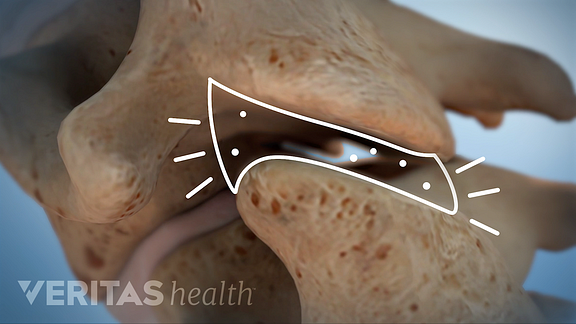Chiropractic techniques involve more than just a back cracking sound that may be heard. Direct care is given to the spine using the knowledge that is gained through earning a doctorate of chiropractic. Medical licensing is not taken lightly. Care treatments are designed with the long-term health of the spine in mind. Most compression fractures- tiny cracks in the bones of your spine, or vertebra - in women at this age happen because of osteoporosis, a condition defined by bones that are weak and brittle.
- Crepitus or crepitation is the noise that may be heard during joint movements, such as a cracking, popping, snapping, or grinding. These sounds and sensations can occur in the neck as well. Most people at some point have experienced neck crepitus. One example is feeling a cracking sensation in the neck when turning the head to back up a car.
- Spine misalignment can eventually cause more serious issues that extend beyond mild pain and discomfort. If your spine isn’t aligned properly, you may be at increased risk of.
What is spondylolysis?
Spondylolysis is a spine condition that can be painful. It's a problem with the connection between vertebrae — the bones that make up the spine. Having spondylolysis can lead to small stress fractures or cracks, often after repeated injuries during sports.
Spine Popping With Movement
Spondylolysis is also known as a 'pars defect' because it affects a tiny spinal bone called the pars interarticularis.
Spine Cracks With Movement Around
Is spondylolysis the same as spondylolisthesis?

Spondylolysis and spondylolisthesis are related but not the same.
- Spondylolisthesis is when one vertebra slips out of place over the vertebra below.
- Spondylolysis is a common cause of spondylolisthesis, because the crack in the vertebra may cause the bone to slip.
How common is spondylolysis?
Spondylolysis affects about 3% to 7% of Americans. It’s common in kids and teens, especially those who participate in sports such as gymnastics or football. Overstretching or overextending the spine, but not inflexion (bending inward) can lead to small cracks in the vertebrae.
What causes spondylolysis?
If you have spondylolysis, you typically have a weakness in a section of the vertebra called the pars interarticularis. This thin piece of bone connects the facet joints, which link the vertebrae directly above and below to form a working unit that permits movement of the spine. The cracks are often called pars fractures.
While we don’t know exactly why the weakness occurs, your genes might play a role. You may be born with thin vertebrae, which puts you at higher risk for pars fractures. Repetitive trauma to the lower back — for example, injuring yourself over and over through sports or other activities — can also weaken the pars interarticularis.
What are the symptoms of spondylolysis?
It’s possible to have spondylolysis and not even feel any symptoms. If you do experience symptoms, low back pain is the most common. The pain often:
Seven Movements Of The Spine
- Spreads across the lower back.
- Feels like a muscle strain.
- Is made worse with extension
Symptoms often appear during teen growth spurts. The typical age of diagnoses is 15 to 16 years (younger in females).